PETER PEARSON
1759 - 1841
Peter Pearson was born in 1759 at Butcher Race, near Hett, Durham. His two baptism dates held in the records at St. John's Church in Kirk Merrington indicate he was possibly a child of ill health. The first date is recorded as 10th September that year, the eighteenth baptism in the church during 1759, with the second date listed as 7th October 1759. Peter was one of five found children born to John and Catherine Pearson. The family had lived in Butcher Race since the mid 1750s, having previously been habitant to Ferryhill.
Right – A 2010 view of Butcher Race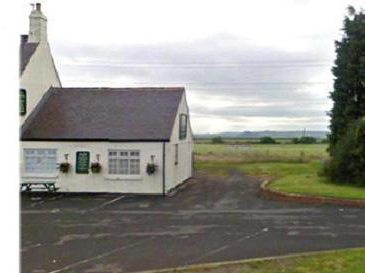
Peter Pearson was born here in 1759
The area known as Low Butcher Race was pinpointed to the North of Thinford and is now home to the Coach and Horses Inn. In 1758, the area known as High Butcher Race lay approximately North-West of Thinford. The title of Butcher Race is reputedly named because a party of foraging Scots were ambushed and butchered here shortly before the Battle of Neville’s Cross in October 1346.
Seventy six years before the birth of Peter, a murder took place in this area. On 25th January 1683, at nearby Brass Farm, now known as
High Hill Farm, a 19 years old servant boy, Andrew Mills, murdered John, Jane, and Elizabeth Brass, the children of John and Margaret Brass. Mills had claimed that a dreadful apparition had ordered him to do the evil act. The description he gave at his trial was thus -
A hideous creature like a fierce wolf, with red fiery eyes, its legs were like a stag, its body resembling an eagle, and was supplied with two enormous wings ". On 15th August that year, following his conviction at Durham, Mills was returned to nearby Ferryhill, where in a field north of here, overlooking Brass Farm, his limbs were bound and he was placed in a metal cage, suspended from a gibbet. It hung there until Mills' slow death from starvation and thirst. The Brass Children were buried at Kirk Merrington the day after they died.
The following photograph is that of St. John's Church at Kirk Merrington, where Peter Pearson was baptised in 1759. The Brass family tomb is to the right of the church door. The document following that picture is of Peter's baptism entry.
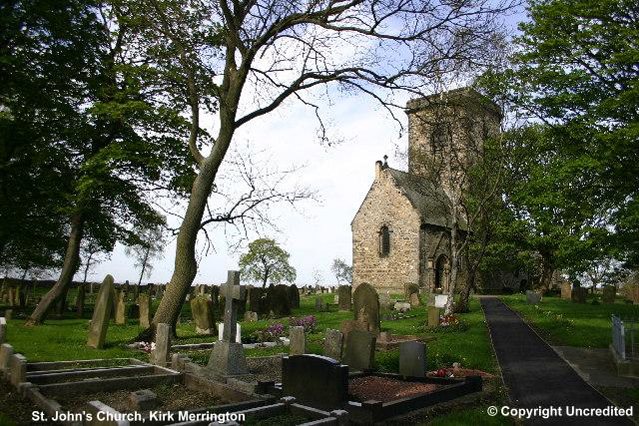
Peter Pearson and his family lived at Butcher Race until the early 1760s, but by the mid 1770s, records show that he,  and his sisters, Catherine and Eleanor had moved to Witton Gilbert. This may have been a result of a Settlement Certificate, and it is suspected that Peter's mother was herself a native of the Village, possibly being born here in 1725. The Ancient village of Witton Gilbert was to serve as the home of Peter's descendants for the next 140 years, with the majority of activity taking place around Front Street and the Church of St. Michael and All Angel. However, links to Butcher Race were still strong until the late 19th Century.
and his sisters, Catherine and Eleanor had moved to Witton Gilbert. This may have been a result of a Settlement Certificate, and it is suspected that Peter's mother was herself a native of the Village, possibly being born here in 1725. The Ancient village of Witton Gilbert was to serve as the home of Peter's descendants for the next 140 years, with the majority of activity taking place around Front Street and the Church of St. Michael and All Angel. However, links to Butcher Race were still strong until the late 19th Century.
Witton Gilbert, in the 18th Century was mainly an agricultural area but Peter chose a more skilled trade, that being as a joiner and coffin maker. As one of the village's main trades was wood, Peter also worked as a Woodman between 1798 and 1841. As well as being a local tradesman to the village, he would also have sold his wares at the Fold, which was the site of the village market until the early 20th Century, as well as Durham Market.

Right – This area was known as the
Fold and was one of two market areas
In Witton Gilbert in the 18th Century.
The Fold was seemingly in existence before the 1800s and continued to trade until the early 1900s. Coals and rural produce were traded between traders from the east and the west of the county. Farmers from the Dales brought wool and livestock to trade for coal with the men from the east. For this purpose, two markets were set up, with the second market operating in a field at the opposite end of the village.
The Front Street, in Peter's time, is very similar to today. It dates back to medieval times with buildings dating to the 1600s. When Peter first arrived here, Front Street was part of a busy turnpike road with a tollgate erected at the western end of the street, near Norburn Lane. Apart from the Church, there were a few farms scattered around the area. One building that Peter saw, still stands today, that being Snook Acres Farm, built in 1620. During World War One, the blacksmith shop adjacent the Farm was used by the army, who forged horseshoes there.
A parish document, dated 1st July 1776 shows Peter acting as a witness to the wedding of Jonathon Wintrop and Jane Kerring at the church of St. Michael's. Peter was only sixteen at the time and over the course of the next four years, he set about sealing his own marriage plans. It is not yet clear how he actually met his future wife, Mary Cowper, as she resided in the parish of Brancepeth, having moved there around the 1770s from
Wylam, Northumberland.
The Marriage Banns for Peter and Mary were shared over three consecutive Sundays in November 1781 between the churches of St. Michael in Witton Gilbert and St. Brandon in Brancepeth, and they wed at the latter on 25th November that year. Mary was pregnant at this time, with her first child due in the following February. After their wedding at Brancepeth, they set up home in Witton Gilbert, Peter's legal place of settlement, this being the law of the land at that time. Here, they lived adjacent the Fold, just down from Coach Lane near the Church.
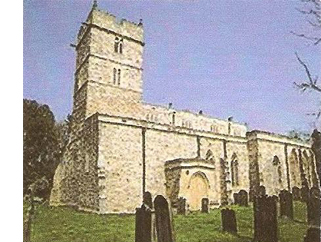
Right – St, Brandon’s Church at Brancepeth.
On 21st February 1782, Peter and Mary attended the baptism of their eldest child, a daughter named Eleanor Pearson. Sadly though, this child died in 1789, being buried in an unmarked grave in St. Michael’s. The scene of the funeral in those early days was quite a religious affair. The Church would have garlands of flowers hung inside, fastened to loops in which slips of paper bearing the name of the deceased was on show. This practise was common until it ceased in Witton Gilbert in 1873.
Peter and Mary were the parents of seven children in total, all born in the village between 1782 and 1798. In that latter year, the British Isles were under constant threat from the French armies of Napoleon Bonaparte, and Witton Gilbert did not escape the threat. In the Century before, people were just beginning to enjoy their freedom more after the old feudal system had gone forever, and now they found themselves under this new threat. A meeting took place at Witton Gilbert Church hall on the evening of Tuesday 3rd April 1798, and Peter attended this discussion. We know this from his signature which can be found on the documents signed that evening. Parliament had believed that even the smallest villages should contribute to the cause. As requested, Peter paid a fee of sixpence, a considerable sum back then. Many persons did not pay anything, mostly the poor peasants who could not afford to do so. Napoleon had decided upon an invasion of Ireland in 1798, but this was a failed attempt. France and Britain did make brief peace in 1802 at Amiens, but were at war again in 1803. The French had decided to try and invade England in that year, and Napoleon was eventually halted at Trafalgar on 21st October 1805.
The population of Witton Gilbert at the turn of the 19th Century was estimated at 369, and this did not really increase in number until the opening of the Victoria and Charlaw Collieries at Sacriston in 1839. Life in Witton Gilbert in 1801 was abrupt, with manners, speech and customs being very course, but life went on. Of the 369 individuals in 1801, it is estimated that approximately 8% were of the Pearson family.
On Tuesday 30th January 1816, Peter and Mary attended the second funeral to befall their offspring, this time it was to pay last respects to their daughter, who incidentally was the second Eleanor to die. The latter was aged 22, and had been married 18 months to one Thomas Jackett. It is thought Eleanor died in childbirth, as a son, John Jackett was also born around this time, sadly dying the following year.
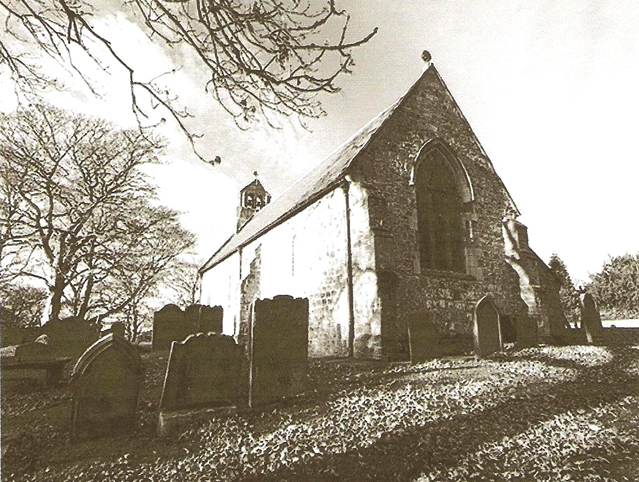
On 3rdApril 1798, a meeting took place at the Church hall here in Witton Gilbert, to discuss the defence of the British Empire against the would be French aggressors. Peter Pearson entered this church on that evening.
Life in general, in Witton Gilbert was an ongoing event for Peter and Mary. There were no televisions or radios in those days and no motor cars to take people on far away breaks. The popular sports at that time were bear-baiting, bull-baiting, and cock-fighting. However, on market days, the noise must have been quite deafening for a small village. By the late 1830s the times were changing dramatically. The opening of the collieries meant more people inhabiting the village, and the rural scene became one of an industrial phase. Nowadays, some 170 years after Peter's death, Witton Gilbert village is as attractive as it probably was when he lived there. Long gone are the collieries, and the only thing which probably spoils the village scene is the amount of vehicles that use its main road on a daily basis.
In 1841, Peter attended the funeral of his beloved wife, who had died in the village on Monday 15th March that year aged 81. This was a lonely phase in Peter's life and his own death followed 8 months later on 18th November. From his death certificate it is suggested that he may have been ill for a while as it is evident that family were at his bedside when he died. Peter was buried three days later in the village churchyard, in a triple grave consisting of his wife, and Eleanor Jackett.
The 1841 Census, taken on 29 June that year states that Peter Pearson was living on independent means, which may insinuate that a will may exist. He is believed to have lived near the Fold when he died.
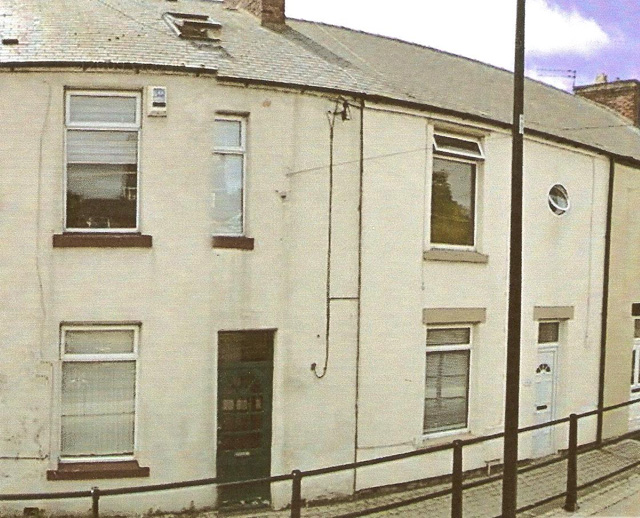
Right – Above – the house that Peter is
believed to have lived in during 1841
The offspring of Peter Pearson and Mary Cowper
ELEANOR PEARSON 1782–1789.
Eleanor was the eldest child to Peter and Mary Pearson, being born on Monday 18th February 1782, she was baptised on Thursday 21st February that year in the church of St Michael and All Angel in Witton Gilbert. Sadly, Eleanor Pearson died, aged just seven years old, in 1789, at Witton Gilbert. She is thought to be buried in the village churchyard. A search in the grounds found no headstone.
JOHN PEARSON 1784–1869.
John was born between July and December 1784, at Witton Gilbert, the second child and eldest son to Peter and Mary Pearson. He was baptised in the church of St. Michael and All Angel, in the village, on Sunday 26th December 1784, In 1809 John is described as a labourer, and in 1811 was working as a woodsman, John's father was the village joiner, and it is thought that John may have worked with him. In 1818, it is thought that John may have opened the first butcher shop in the village before operating as a publican, in 1841. He is recorded as a miner in 1852, and nine years later, his trade is given as a retired butcher. John Pearson died in April 1869 in Witton Gilbert. He was buried on 18th April 1869 in the village churchyard. On 8th October 1809, he married Mary Robinson at Witton Gilbert, she being locally born in 1790. From their union there were approximately eight children. These were as follows -
Robert Pearson (born 1809), Elizabeth Pearson (born 1811), John Pearson (born 1816), Mary Pearson (born 1818), Ann Pearson (born 1820), Barbara Pearson (born 1822) and Peter Robinson-Pearson (born 1825). There was an eighth child, whose name is currently unknown. Peter Robinson Pearson married Jane Wilson in 1852. Sadly, Ann died in 1826 aged just 5 years, and was buried on 15th January that year in Witton Gilbert churchyard.
JANE PEARSON 1785–1787.
Jane was the third child to Peter and Mary Pearson. She died at Witton Gilbert on Tuesday 13th February 1787, being buried three days later in the village churchyard in an unmarked grave. It is thought that Jane was not more than two years old when she died
MARY PEARSON 1791–1844.
Mary was the fifth child to Peter and Mary Pearson, being born at Witton Gilbert during July 1791. She was baptised at Witton Gilbert on 31st July 1791. She married William Elliott of Stanhope at Witton Gilbert on 13th May 1809. Following their marriage, they remained in Witton Gilbert until around 1813 before a brief stay at Waldridge Fell and then a return to Witton Gilbert. William, in 1810 worked as a Charcoal Burner before turning his hand to Husbandry. Mary died around 23rd January 1844, and was buried in Witton Gilbert on 26th January that year. William's own death seems to have occurred around April 1848, but his death age does not coincide with his thought year of birth. There were nine found children born to Mary and William Elliot, all thought to have been born in Witton Gilbert between the years 1810 and 1833, except for a daughter, Mary, born at Waldridge Fell in 1814. These offspring were named as follows, Peter Pearson Elliott (1810 -1873), George Elliott (1810 -?). William Elliott (1812 -?), Mary Elliott (1814 -?), David Elliott (1817 -?), John Elliott (1818 -?), Eleanor Elliott (1823 – c1890). Elizabeth Elliott, (1827 -?) and David Elliott (1833 -1903).. (More information on this branch of the family "click here")
ELEANOR PEARSON 1794–1816.
Eleanor was born between 1st January and 17th August 1794, at Witton Gilbert, the sixth child to Peter and Mary Pearson, She was named out of respect to her dead sister, who died in 1789, aged seven years old. A baptism was held at St. Michael and all angel church in the village on 17th August 1794. Her epitaph states that she married Thomas Jacketts, this wedding taking place on 23rd July 1814 at Durham St Oswald’s. It seems that, following their marriage, they set up home in the parish of St Margaret in Durham City. Eleanor, at this period in her life was better known as Ellen Pearson, as stated on the marriage records for Durham St. Oswald's church, which incidentally, may well have been Roman Catholic. Eleanor died on Tuesday 30th January 1816, thought to be in childbirth at Durham, aged 22 years old. Her grave is in Witton Gilbert churchyard, and a headstone marks the burial place for Eleanor and her parents. This is the earliest grave found so far, with regards to the Pearson family tree. The whereabouts of Thomas Jacketts remains unknown, and the ONS Index suggests his surname may be associated with the area of Cornwall or Devon. Eleanor and Thomas had one child, born in January 1816 named John Jacketts. The latter died in January 1817 and was buried at Witton Gilbert on 14th January that year.
ELIZABETH PEARSON 1797.
Elizabeth was the seventh child to Peter and Mary Pearson, being born at Witton Gilbert on Friday 1st December 1797. She was baptised at St. Michael and All Angel church on Tuesday 15th July 1798. There may also be a later baptism date, at Washington, on Saturday 6th December 1798, but this is uncertain.
PETER PEARSON 1788 - 1876.
"See P Pearson 1788"